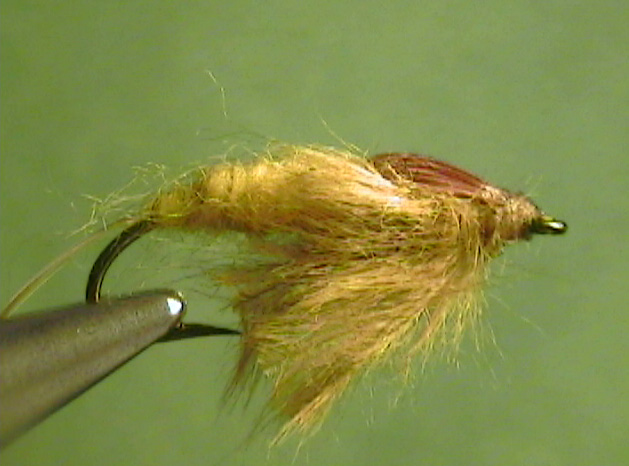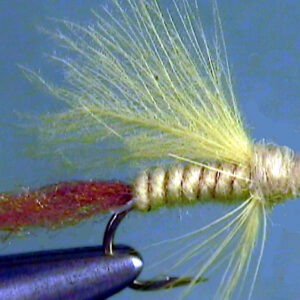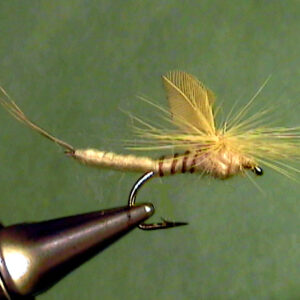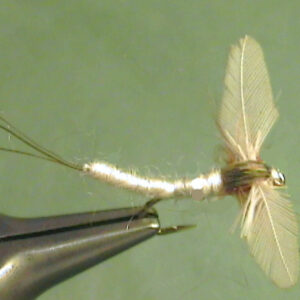Hook Size: 10
The Perfect Fly Golden Drake nymph is a trout fly that imitates the Golden Drake mayfly in the nymphal stage of life. Golden Drake nymphs are little swimming nymphs. They can’t actually swim but dart about on the bottom and should be fished on or near the bottom.
The Golden Drake is the Anthopotamus distinctus. It is found in both the East and
Mid-west. The nymphs are burrowers (some call them simi-burrowers) that spend most of
their life in their burrows where they are not available for trout to eat. They come out of
their burrows to molt and to feed at which time the trout can find and eat them. They also
come out to hatch. That is when the nymphs are most available for the trout to eat. They
are rather helpless at that time. These burrower nymphs live in slow to moderately
moving water that is sometimes on the border line of being too warm for trout. They hatch
during the summer. These nymphs migrate to the edge of the river just prior to hatching.
You will find them in very shallow water during the emergence period.Presentation:
The Perfect Fly Golden Drake Nymph should be cast and allowed to sink to the bottom. If
you are fishing it at times other than during the hatch, you should keep it on the bottom
of the areas of the stream that have soft bottoms. This may be water that is relatively
deep.
When they move near the banks of the stream to hatch, you want to present your fly in
the shallower water along the banks. Be careful not to spook the trout that may be
feeding on them in shallow water or water next to the bank by walking up to the edge of
the stream. Stay back and present the fly all the way to the banks in areas where this is
possible. If you have to wade, wade out away from the bank and cast the fly back to the
banks. You want to fish it very slowly. Keep the fly in the slower moving current.
Mid-west. The nymphs are burrowers (some call them simi-burrowers) that spend most of
their life in their burrows where they are not available for trout to eat. They come out of
their burrows to molt and to feed at which time the trout can find and eat them. They also
come out to hatch. That is when the nymphs are most available for the trout to eat. They
are rather helpless at that time. These burrower nymphs live in slow to moderately
moving water that is sometimes on the border line of being too warm for trout. They hatch
during the summer. These nymphs migrate to the edge of the river just prior to hatching.
You will find them in very shallow water during the emergence period.Presentation:
The Perfect Fly Golden Drake Nymph should be cast and allowed to sink to the bottom. If
you are fishing it at times other than during the hatch, you should keep it on the bottom
of the areas of the stream that have soft bottoms. This may be water that is relatively
deep.
When they move near the banks of the stream to hatch, you want to present your fly in
the shallower water along the banks. Be careful not to spook the trout that may be
feeding on them in shallow water or water next to the bank by walking up to the edge of
the stream. Stay back and present the fly all the way to the banks in areas where this is
possible. If you have to wade, wade out away from the bank and cast the fly back to the
banks. You want to fish it very slowly. Keep the fly in the slower moving current.
Copyright 2003 James Marsh



